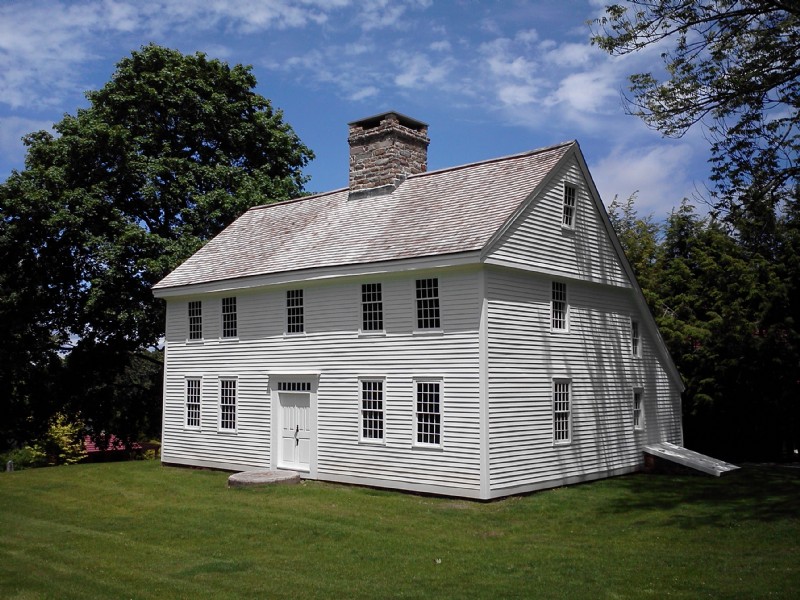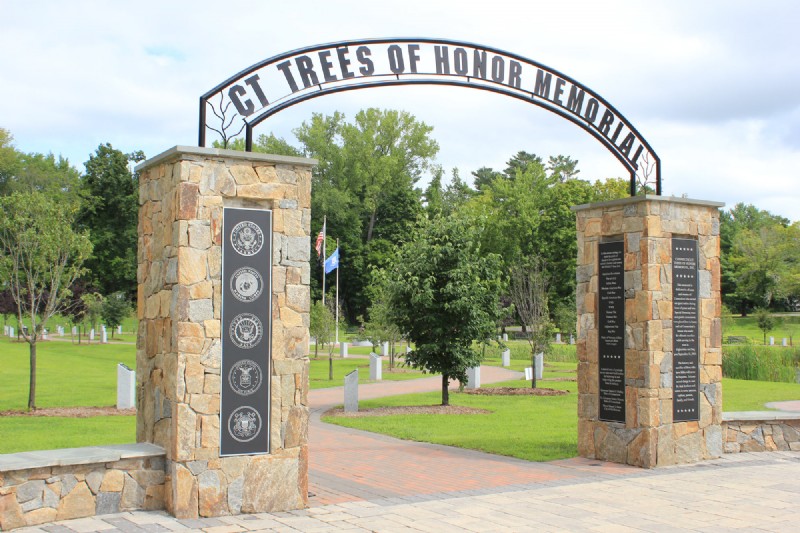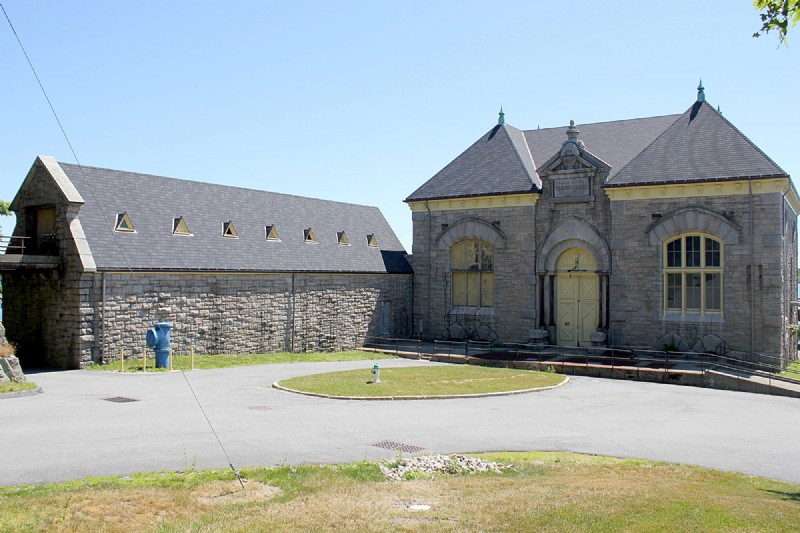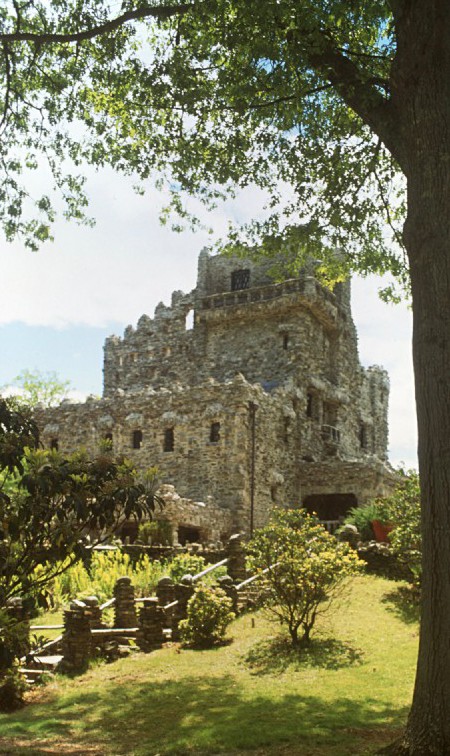Since the time of the Wangunk Native Americans, the land that makes up Indian Hill Cemetery has been a special place to those who inhabit the area. The land and its history command a deep reverence for those who have come before us. The cemetery is a place of great tranquility not only for those laid to rest, but also for the living who enjoy spending time there. It is with this respect and admiration of history that Kronenberger and Sons approach all of our projects.
The Russell Chapel at Indian Hill presented us with the opportunity to work on a vital piece of history in our local community. Our employees have spent a great deal of time at Indian Hill walking their dogs, catching a sunset, or watching the fireworks from Palmer Field. We feel that the cemetery is one of the best-kept secrets in the area. KSR is honored and proud to have worked on this project. We hope future generations enjoy the cemetery and Chapel as much as we have.
Kronenberger & Sons won a 2023 Excellence in Construction Award from ABC Connecticut for the Russell Chapel project.
This is the story of our project restoring the Russell Chapel at Indian Hill Cemetery:
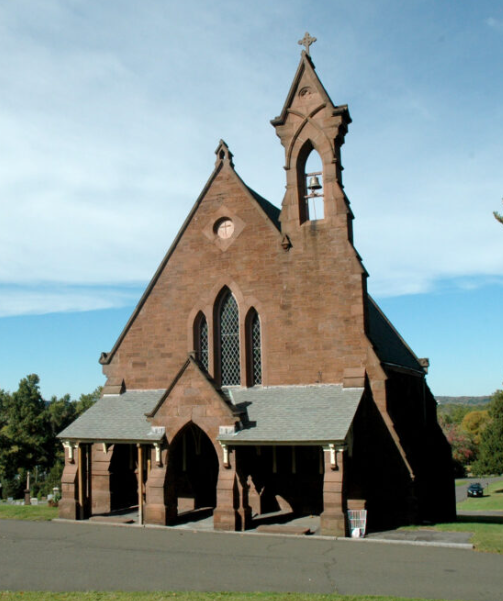
The Russell Chapel at Indian Hill
In 1867, Middletown’s Frances Russell donated the Chapel in memory of her late husband, Samuel Russell. The Gothic Revival architecture is constructed of Portland Brownstone, and embellished with small brownstone carvings. The Chapel is known for housing the Meneely Bell, forged in Troy, New York in 1868. In its prime, the Chapel’s interior featured stunning stained glass windows, elegant hand-carved woodwork, and custom finishes. This historically significant building is listed on the Connecticut Register of Historic Places.
The Chapel was the centerpiece and crown jewel of the cemetery. After nearly 150 years of service, the building showed its age and fell under disrepair. Kronenberger & Sons was retained to repair and restore the interior back to its original refined beauty. The project included restoration of all the woodwork and wainscoting, plaster, flooring and pews, as well as the ornate, original entry doors.
Before beginning work on the Chapel, KSR performed a comprehensive building survey to determine the level of restoration required. This included closely examining termite and water damage, as well as all necessary repairs. Replacement as well as repairs to woodwork and millwork was created in KSR’s Middletown shop. Reproductions were blended with original materials and installed to ensure a seamless match for historical accuracy.
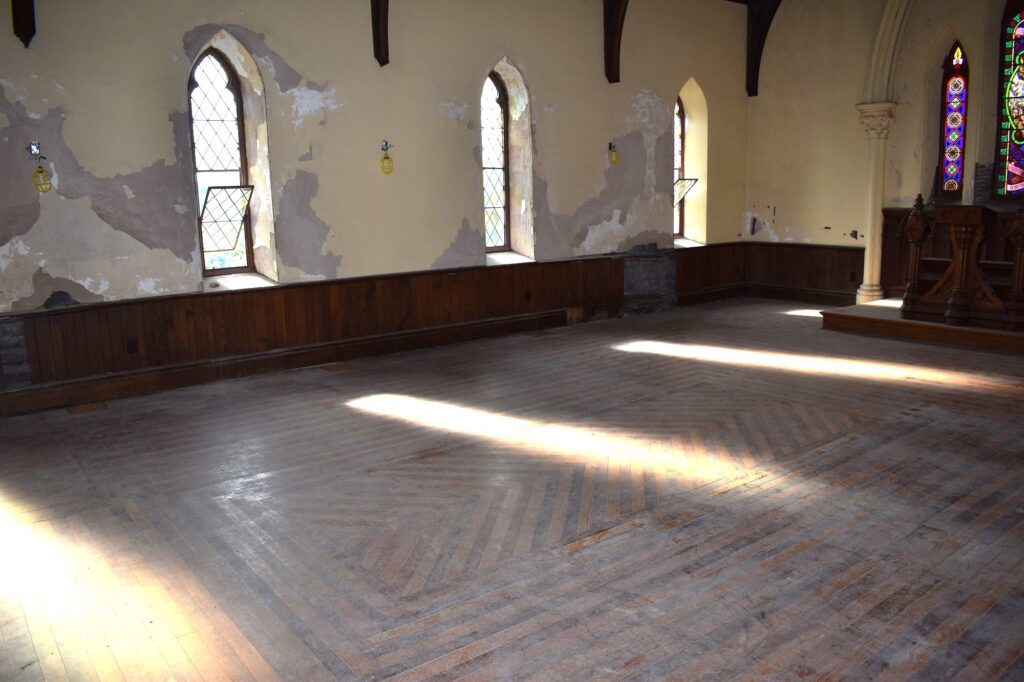
Project Scope
Assessment of Chapel
The first step of the project was to assess the Chapel to determine the level of restoration required. We erected staging on the Chapel’s interior to gain access to all the work areas.
Plaster Restoration
Much of the original plaster was damaged and had to be removed, and some was intact requiring only repairs. Custom profiles were hand cast in place and matched to the existing profiles. Wall plaster was also repaired at critical locations.
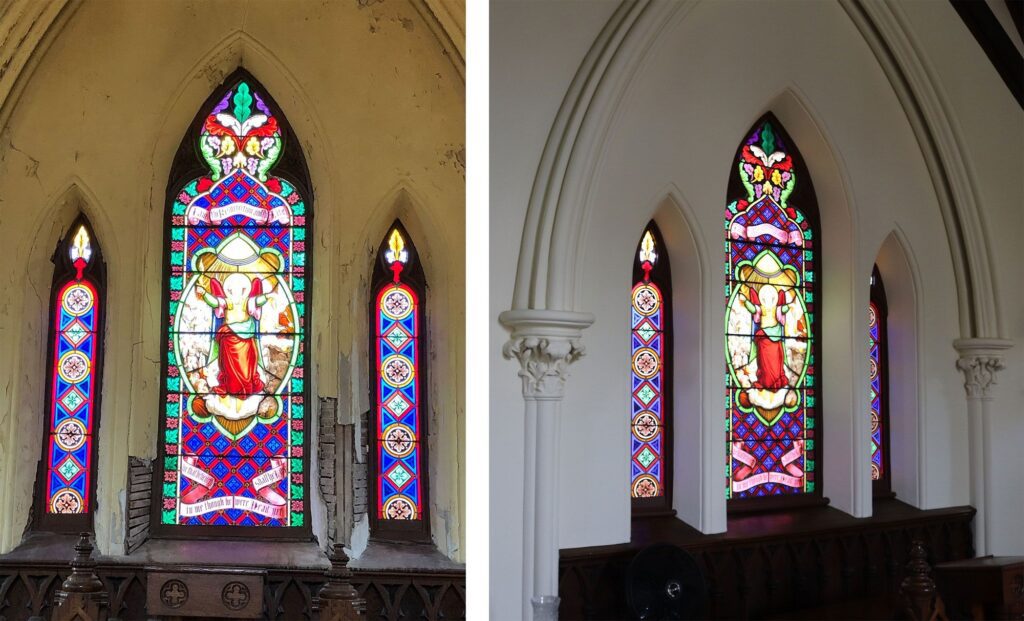
Wainscoting and Woodwork
We took great care to seamlessly blend reproduced woodwork with original materials. Custom profile knives were made to match the existing historical profiles. The species of wood was determined to be Chestnut which was as plentiful as pine back in the late 1800s. Unfortunately, the chestnut tree was hit by a blight accidentally brought in from Japan, killing almost every tree in New England. The only chestnut currently available is reclaimed from old mill buildings. With help from internet research, we were able to find a mill in Plymouth, CT, with a bountiful stock of chestnut for us to choose from. The millwork was recreated in our Middletown shop. We installed the millwork in such an order as to ensure the transition from plaster to wood was seamless and matched the original for historical accuracy.
Stain-matching
We mixed several custom stain options using Aniline Dyes and tested them on several chestnut samples to ensure a proper color match. The original topcoat finish was orange shellac which we were able to successfully reproduce and use on all the woodwork for a seamless restoration.
Memorial Tablet Restoration
During the project, memorial tablets of John and George Russell were discovered in the crypt of the Chapel by Superintendent Norm Emond. Long thought to be lost or damaged beyond repair, the tablets underwent a total restoration. The process included completely disassembling the tablets to determine what pieces were missing. Over 50% of the tablets had been lost due to age, moisture, and insect damage. The cemetery wanted the pieces to be restored to their original state. We identified the wood species, again as chestnut, and sourced chestnut to mill new replacement pieces. Custom painting completed the memorial tablet restoration.
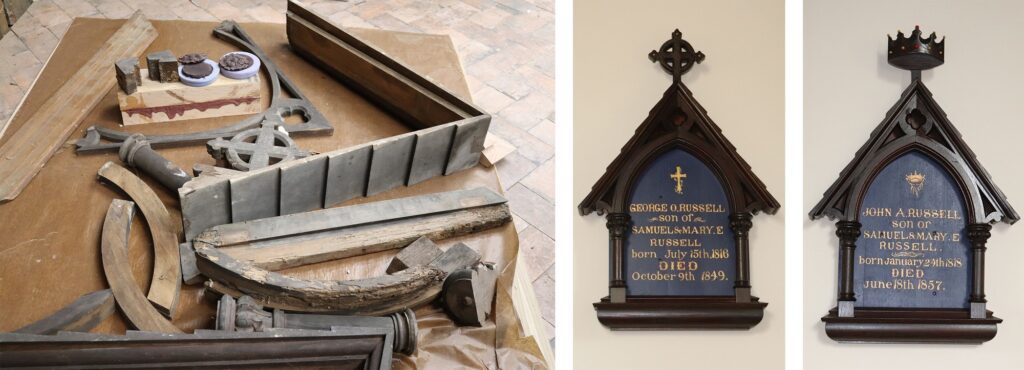
Floor Restoration
The floor was a combination of ash and chestnut. We milled 50 sq. ft. of ash and chestnut flooring so that the flooring contractor could scarf in the reproduction flooring. The restored floor was then sanded, and three coats of oil-based polyurethane was applied.
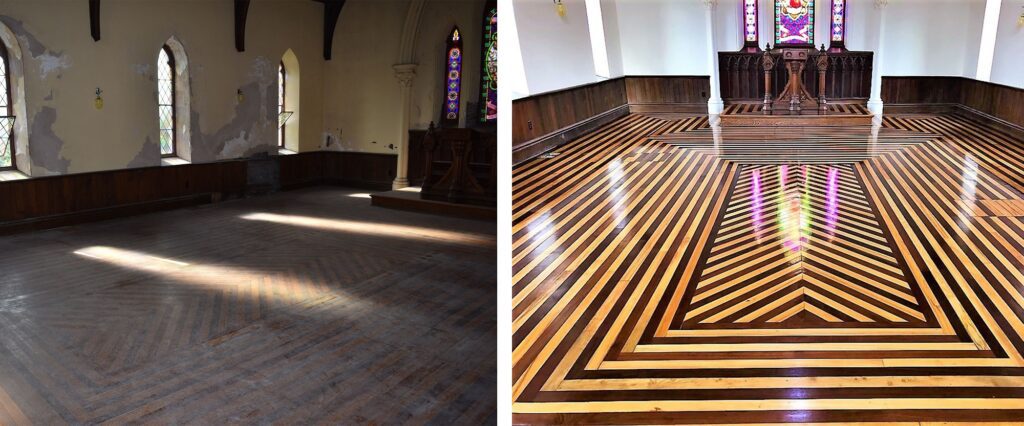
Pews
The pews were first inspected, then transported to our Middletown shop for cleaning and refinishing. The pews featured decorative medallions that also needed to be repaired and restored. KSR developed a new technique for making an intaglio-negative mold out of pure latex to create reproduction decorative medallions. We then mixed marine epoxy, tinted it with aniline dye, poured it into the intaglio, and let it cure. The result was a remarkable replication that is impossible to tell from the original medallions. Three coats of pre-catalyzed lacquer were applied to the pews, along with reproduction decorative medallions that adorned the pews.
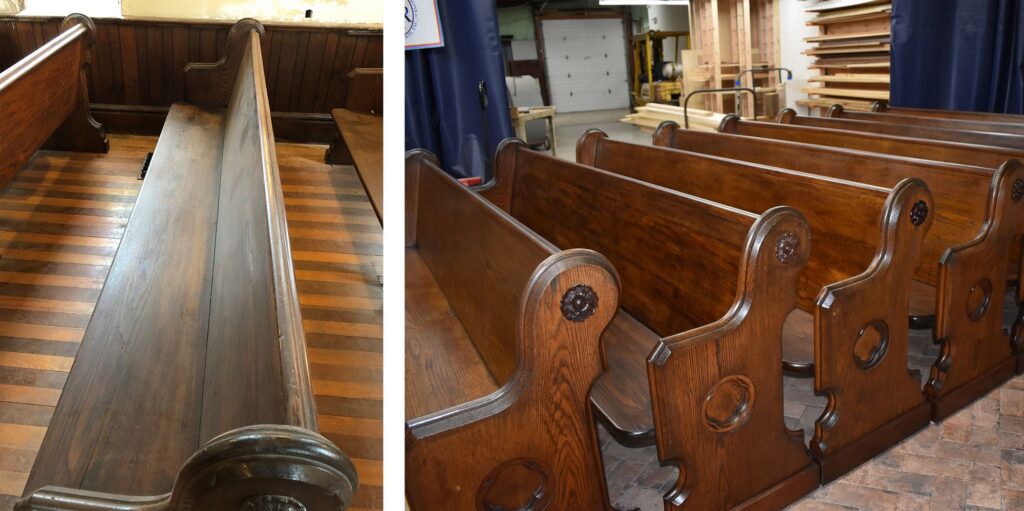
Door Restoration
The eight-foot original, gothic-style doors were removed and transported to our shop for a full restoration, including reproduction hardware. Temporary doors were installed in the meantime. Miscellaneous pieces and parts were also replaced with like-and-kind materials. Six coats of marine varnish were applied to the exterior, and the doors were reinstalled, complete with a new deadbolt and handle set.
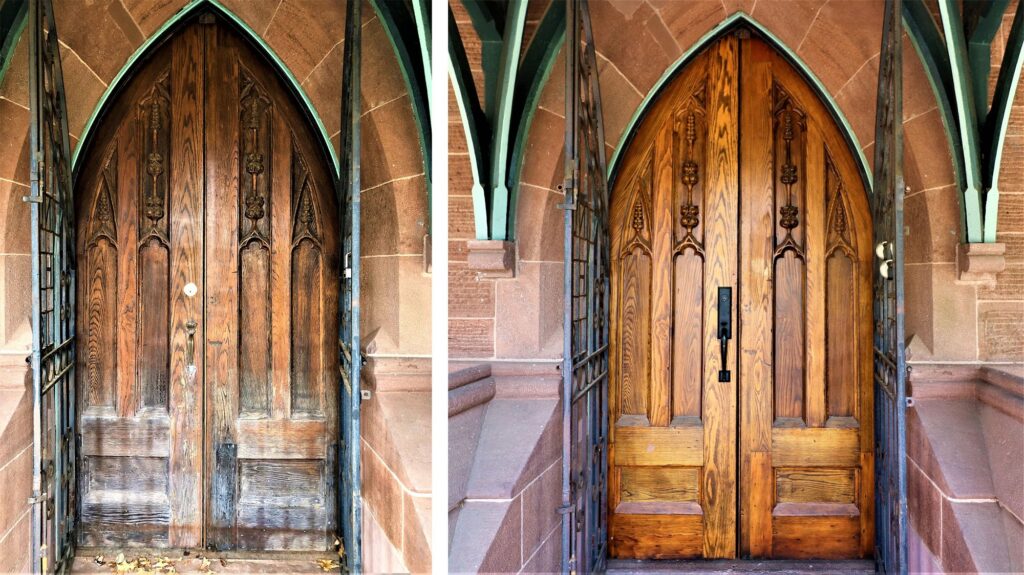
An Unexpected Glitch
During the project, the Chapel was broken into and severely damaged by vandals. During the commission of the break-in, the criminals smashed a stained-glass window to gain entry to the Chapel. Once inside the Chapel, they realized they were locked in, so they used a piece of scaffolding to break the door to get out. In total, damages exceeded $25,000 and caused the project timeline to be delayed for several weeks. The stained-glass repair proved to be a challenge, as finding a color match for the window glass was difficult. Fortunately, KSR had leftover chestnut to reproduce a new door panel, and ultimately, we were able to restore the door for a second time.
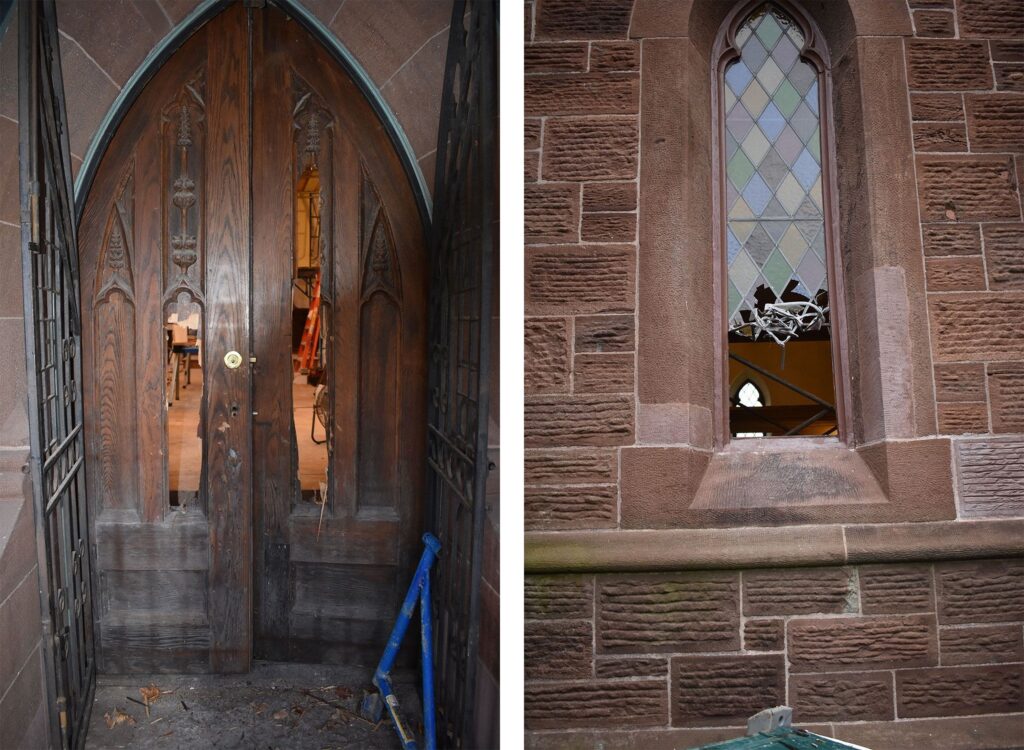
Learn more about the restoration of the Russell Chapel on Indian Hill Cemetery’s website.
A Bit of History
Native History of Indian Hill
Before it became a cemetery, the land that is now Indian Hill belonged to the Wangunk Native American Indians. They referred to this area as Mattabesset, an Algonquian word for the river that runs through the area and connects to the Connecticut River. The property naturally served as a strategic vantage point as it provided a 360-degree view of the region. This vantage point allowed the Wangunk to see English and Dutch advancement up the Connecticut River, as well as a line of sight to the activity of other Native tribes. As more and more English entered the region, the land was eventually sold by the Wangunks to the colony of Connecticut.
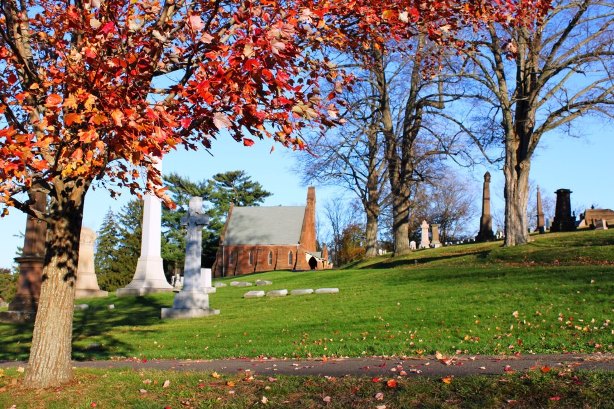
History of Indian Hill Cemetery
Indian Hill Cemetery was established in 1850, and represents a significant part of Middletown’s history. It was established as part of the America Beautiful Movement, which promoted rural environments and serene landscaping for public places, particularly cemeteries. This intention is certainly well exemplified at the Indian Hill Cemetery.
The tranquil setting and panoramic views made Indian Hill Cemetery the choice for Middletown’s elite in the late 19th Century. Indian Hill Cemetery also reflects Middletown’s considerable diversity, holding graves of families from all the European countries, the Far East, Africa, as well as this area’s first settlers and descendants.
Today, Indian Hill Cemetery is the geographic and community centerpiece of Middletown. It is still an active cemetery that welcomes all faiths and races. The grounds offer one of the highest outlooks in the Middletown region, overlooking the Connecticut River. A unique park-like cemetery, Indian Hill was designed with tiers, grass roads, specimen trees, and grand foliage that still exists today. Its open spaces are designed for public use, and the property is enjoyed year round by visitors who enjoy the space for walking and contemplation.
Indian Hill Cemetery Mission Statement
The mission of the Association for the Preservation of the Historic Indian Hill Cemetery is to serve the community as an active burial ground and conserve the physical artifacts, buildings, and infrastructure of the cemetery; to celebrate the American heritage represented by those interred here; maintain the Native American heritage of the land, restore and sustain the landscape, and manage the grounds as an accessible community resource.
